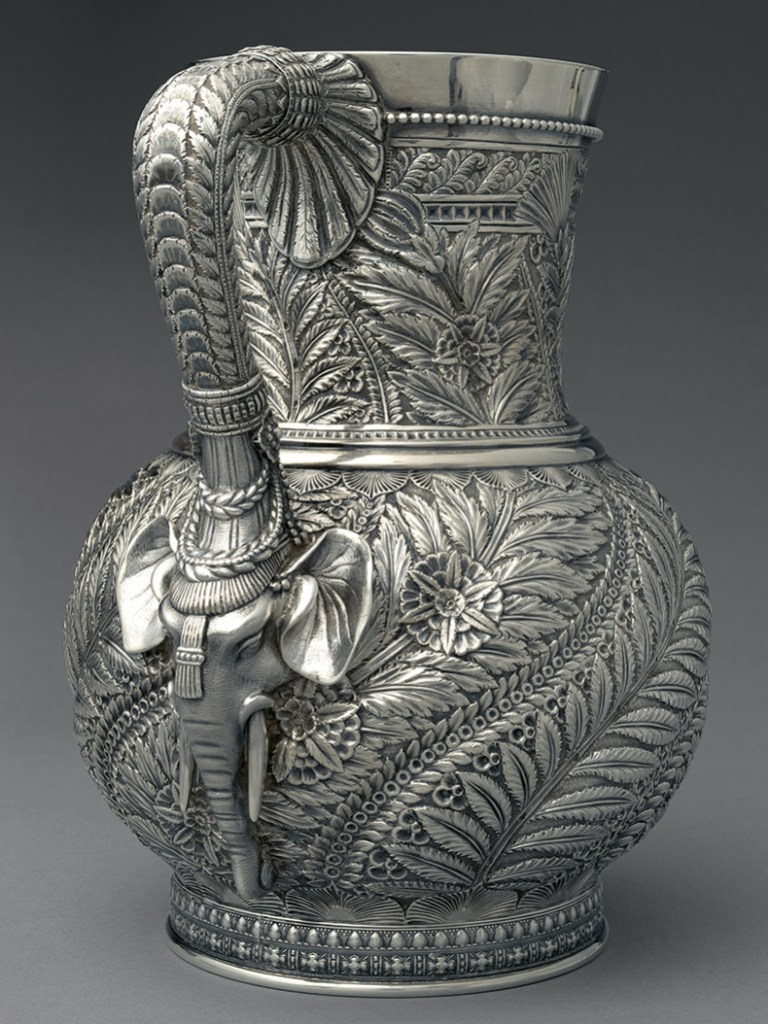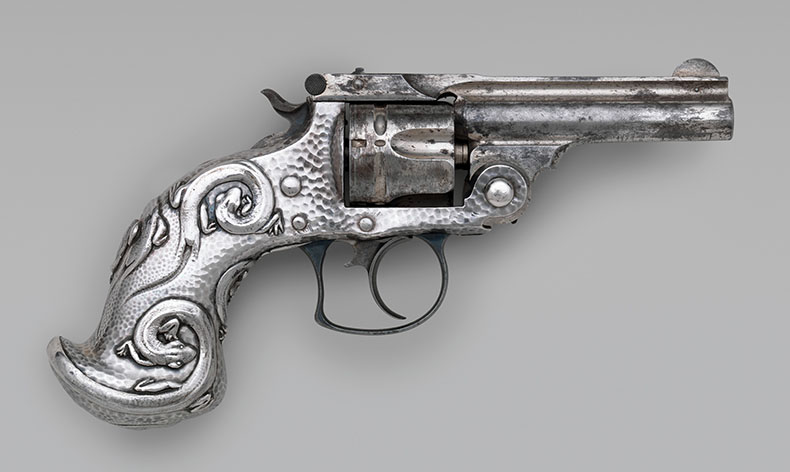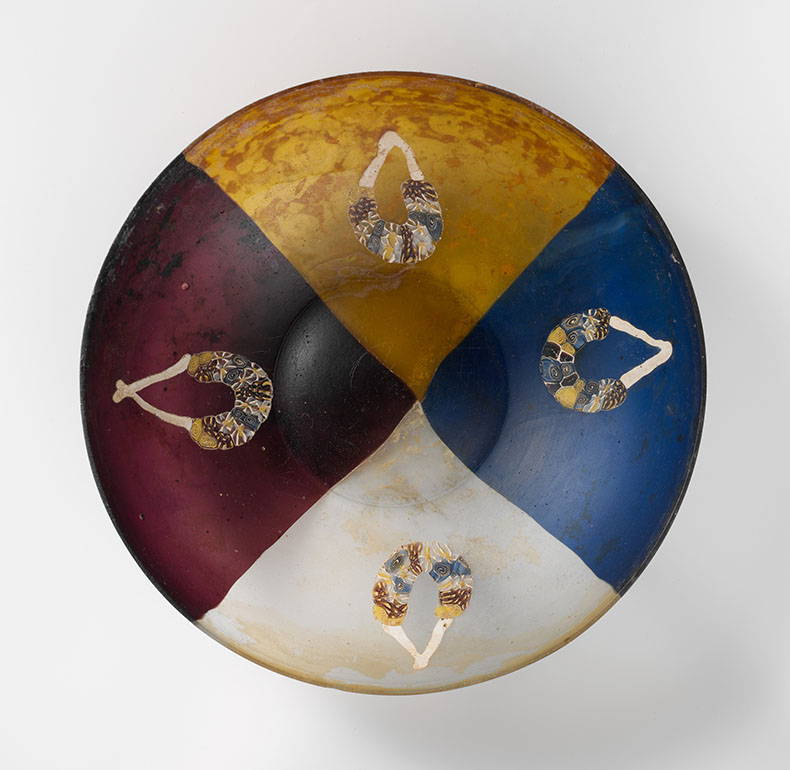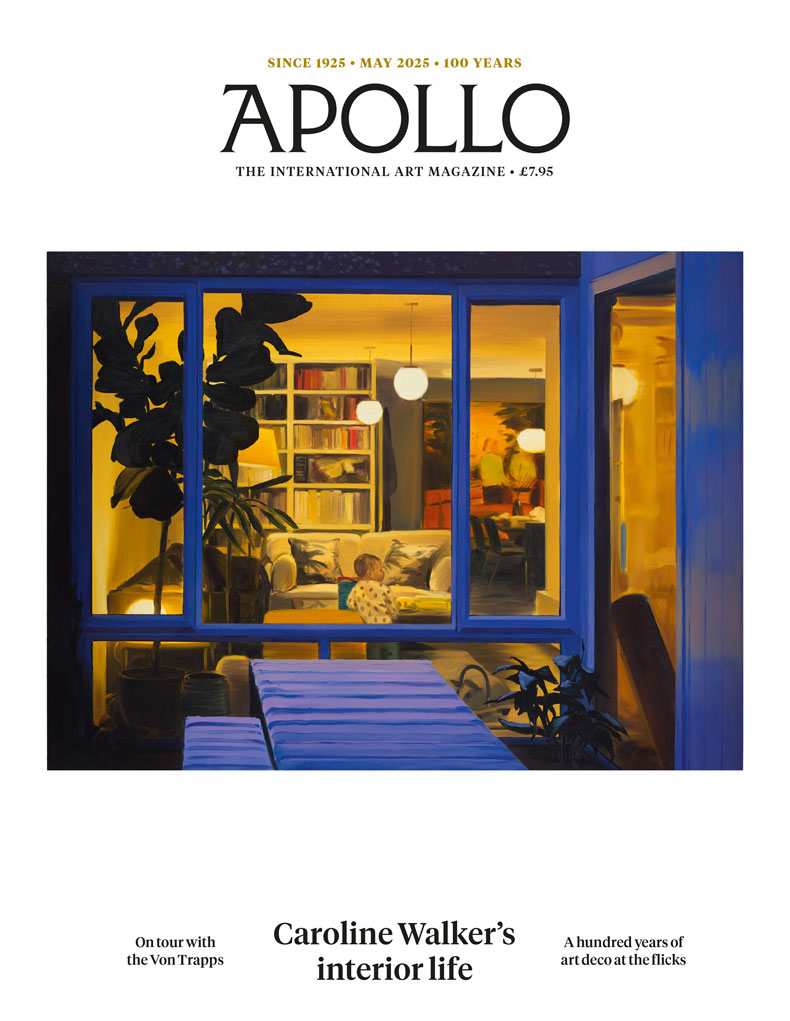From the July/August 2024 issue of Apollo. Preview and subscribe here.
We know what the collector and tastemaker Edward Chandler Moore (1827–91) liked to look at, handle, read and make, but much else about him remains mysterious. He worked for decades as a silversmith, designer and executive at Tiffany & Co. in New York, while encouraging his underlings to educate themselves by poring through his antiques and library. His treasures ranged from shards of ancient Roman glass to the tiles of Middle Eastern mosques, gourd-shaped Japanese rattan baskets and books about lace and baptismal fonts. His heirs entrusted the collection – about 2,000 objects and 500 volumes – to the Metropolitan Museum of Art, which has deaccessioned virtually nothing that belonged to Moore. ‘Collecting Inspiration: Edward C. Moore at Tiffany & Co.’ explores how the company’s silverware, with whimsical motifs and experimental combinations of metals, developed from his voracious collecting habits and from the cauldron of upwardly mobile arts patrons and artisans in Gilded Age New York.

Pitcher (1874–75), made for Tiffany & Co. Metropolitan Museum of Art, New York
The Met’s curatorial team, led by Medill Higgins Harvey, has uncovered reams of documentation of Moore’s work and influence on the field, but few glimpses of his inner life. Nothing personal or revealing has surfaced in his own correspondence, nor in anyone else’s. ‘He was an incredibly private person,’ Harvey says, and she adds that there may have been a family scandal to cover up which required destroying papers. I’m happy to wander around the Met’s exhibition in a fog of unanswerable questions.
What drove a metalworker with minimal formal education to buy, for instance, netsukes and Latin American gold pendants shaped like frogs, and Ottoman turban ornaments studded with pearls and turquoise? And how did he persuade clients to commission, for example, a pistol with salamanders spiralling along its silver grip, or polychrome cutlery crawling with insects? The son of a silversmith, Moore started collecting in the 1860s. During frequent buying trips overseas, he spent months at a time in Paris and London and consulted scholar-dealers such as Alessandro Castellani. Widely respected as ‘honest, industrious, straightforward, and shrewd’, as Harvey writes in the catalogue, Moore joined elite men’s organisations including the Grolier Club and the Century Association. He hobnobbed with other collectors and Tiffany customers, such as Henry and Louisine Havemeyer, John and Louise Mackay and Anne and Harry Flagler – whose fortunes came from sugar, mining and oil respectively – and Mary Jane Morgan, wife of the railroad magnate Charles Morgan.

Smith and Wesson .38 Caliber Double-Action Revolver, designed by Tiffany and made by Smith and Wesson. Metropolitan Museum of Art, New York
Moore, unlike many of his peers, did not use collecting as a tool for social climbing. He did not seek out baubles owned by particular sultans or European royals. He was unfazed by cracks and chips in the objects that he imported as educational fodder for his mentees, who included immigrants from France and England as well as company heir Louis Comfort Tiffany. Staff were also urged to study live frogs and fish in the workroom’s aquarium. Moore aimed to make Tiffany products ‘distinctively American and unlike anything that is produced abroad’, he told a reporter in 1883.
Moore’s workaholism attracted press attention. ‘From morning till night he is at the shop […] and when the factory is closed he is collecting and selecting models and designs,’ the New York Sun reported in 1878. His British-born wife Mary Pethick, meanwhile, raised the couple’s five children who reached adulthood, most of whom went to work for Tiffany. Moore’s will specified that his collection should ‘be kept together […] for the use and benefit of the public’. For decades, the Met displayed it all in one expansive gallery; after the Second World War, his finds were dispersed into young departments dedicated to, for instance, arms and armour and Islamic art.

Glass garland bowl, late 1st century BC, Roman. Metropolitan Museum of Art, New York
For the current exhibition, Harvey’s team has placed the Tiffany pieces in the centres of the galleries, while Moore’s antiques and antiquities line the walls. The aesthetic conversations are practically audible. Striated ancient perfume bottles are juxtaposed with a Tiffany mustard pot from around 1879, dripping with alloys of patinated gold, silver, copper, platinum and iron. A book from 1881 about the Basilica of San Marco in Venice illustrates geometric tile mosaics, which surely inspired a Tiffany cup and saucer patterned with mixed-metal triangles. Bead strands are draped along Ottoman jewellery and Mary Morgan’s six-foot-tall pair of Tiffany candelabra. Dragons, dragonflies and frogs teem on vessels and accessories from China, Japan and the Middle East and on Tiffany trays, vases, pitchers and trophies, and the Havemeyer’s flatware. Pomegranates and chrysanthemums are slathered on Japanese inros and clothing, fragments of Persian silk and Tiffany vessels for the Flaglers, Mackays, Mary Morgan and the congregation at midtown Manhattan’s Temple Emanu-El.
A gallery of video screens shows contemporary artisans at work, layering and gouging metal squares into simulations of chocolatey agate, and pages from a Tiffany technical manual from the late 19th century. Alongside the manual’s sketches of motifs, handwritten instructions detail best practices for soldering, annealing, etching, bathing in chemicals and planishing. One recipe warns that ‘one drop too much’ of a particular ingredient could ruin the intended effect. Harvey’s catalogue supplies more information about how Moore’s workers tinted and textured metal with acetates, acids, bromines, oxides and sulphates.

Cup and saucer (c. 1881), made for Tiffany & Co. Metropolitan Museum of Art, New York
I must admit that I am the target audience for this exhibition. I have long been such a Moore fan that, during visits to the Met, when I spot his name on labels for his bequests, I am apt to rhapsodise aloud about him to my companions and random strangers. The entrance to ‘Collecting Inspiration’ is in a gallery of ancient Greek art, so visitors may wander in who think they have no interest in 19th-century luxuries. But they may find themselves captivated by the ways in which one enigmatic, philanthropic craftsman created something ‘distinctively American’ to sell.
‘Collecting Inspiration: Edward C. Moore at Tiffany’ is at the Metropolitan Museum of Art, New York, until 20 October.
From the July/August 2024 issue of Apollo. Preview and subscribe here.















![Masterpiece [Re]discovery 2022. Photo: Ben Fisher Photography, courtesy of Masterpiece London](http://zephr.apollo-magazine.com/wp-content/uploads/2022/07/MPL2022_4263.jpg)
Suzanne Valadon’s shifting gaze